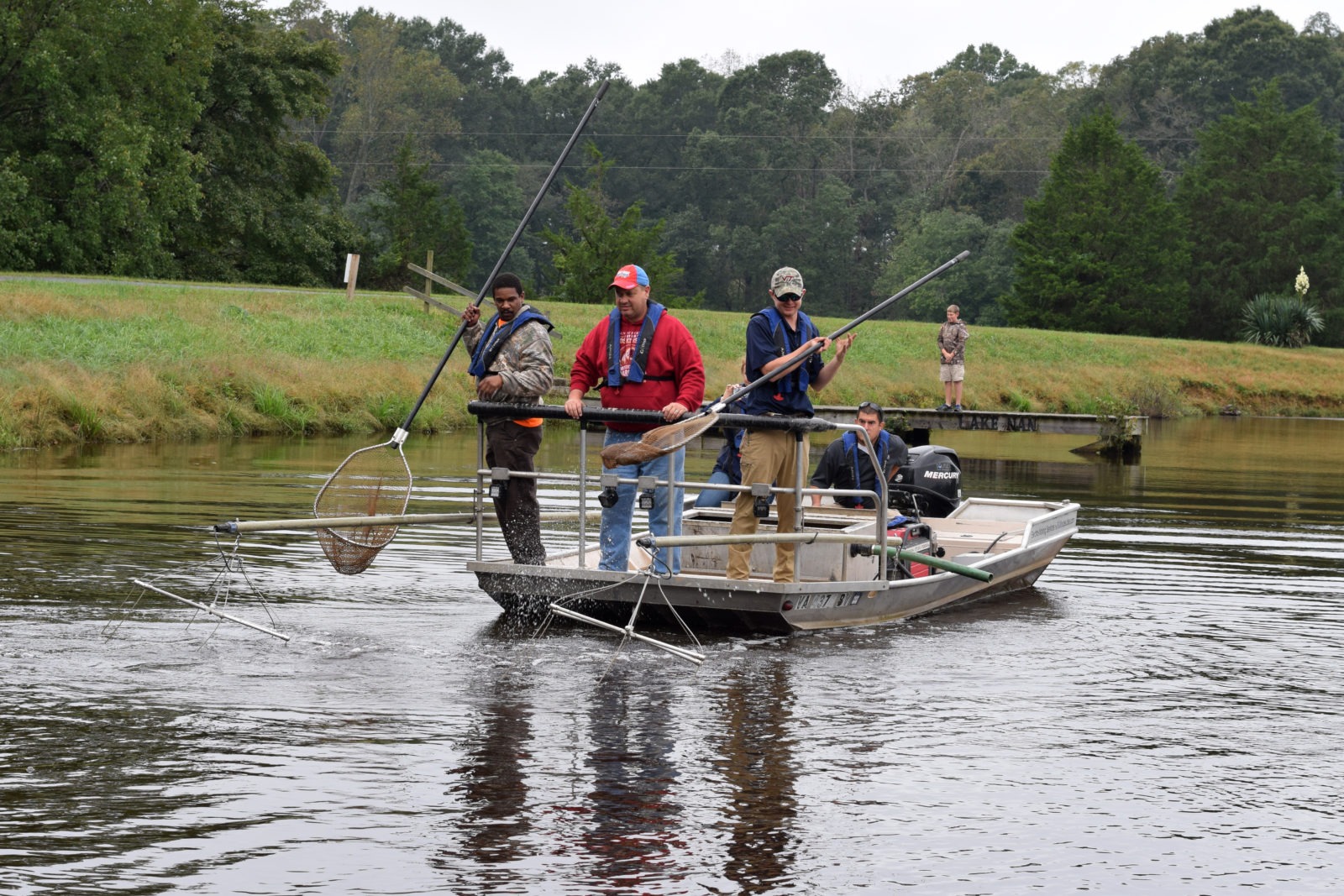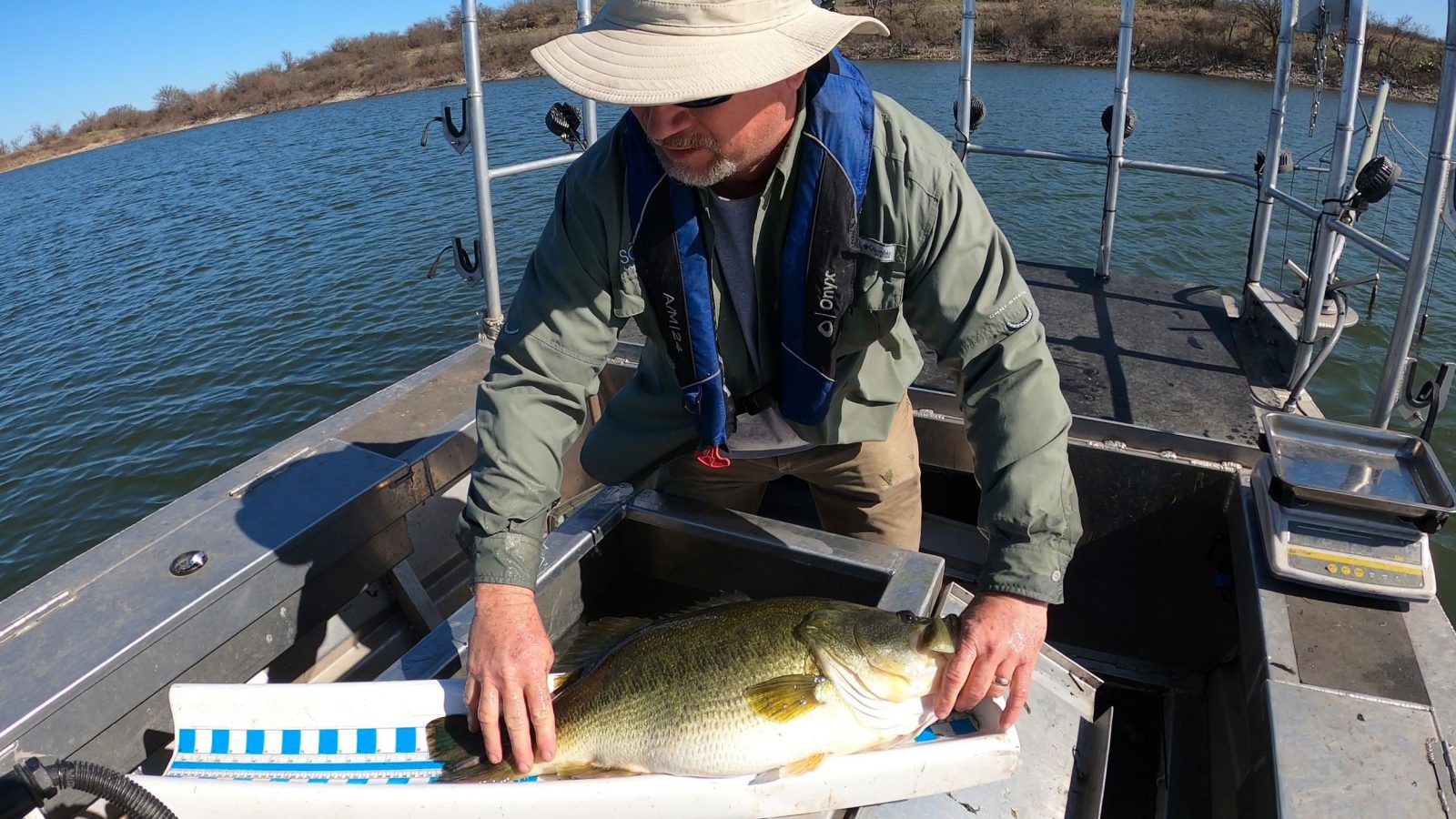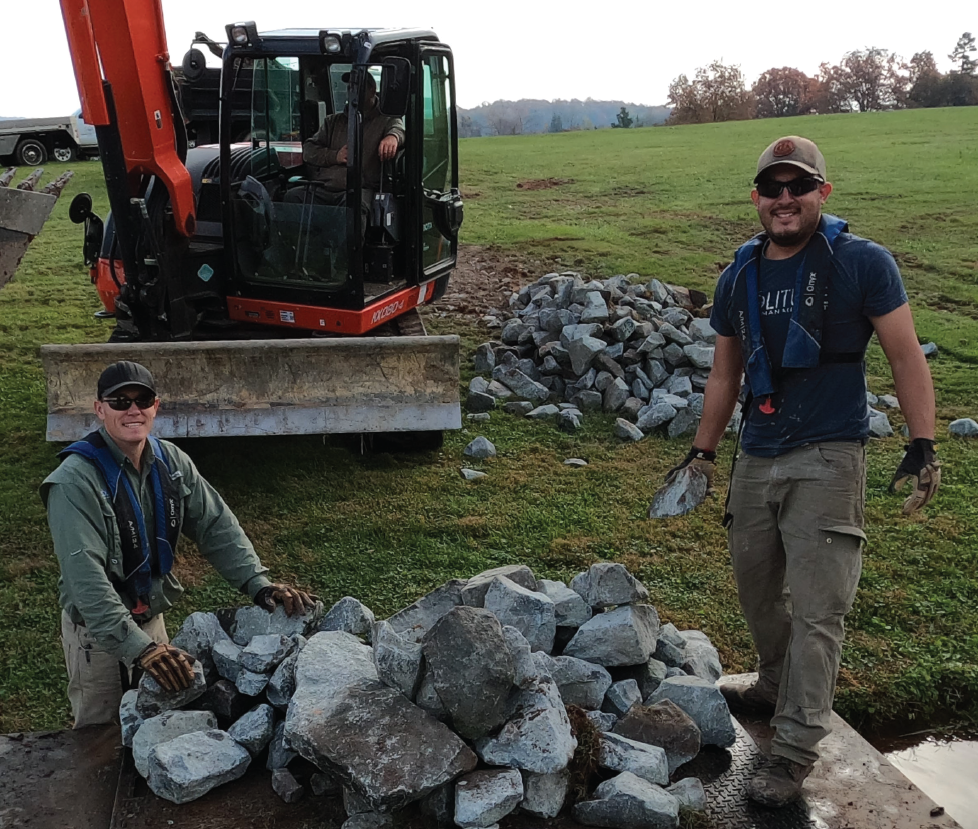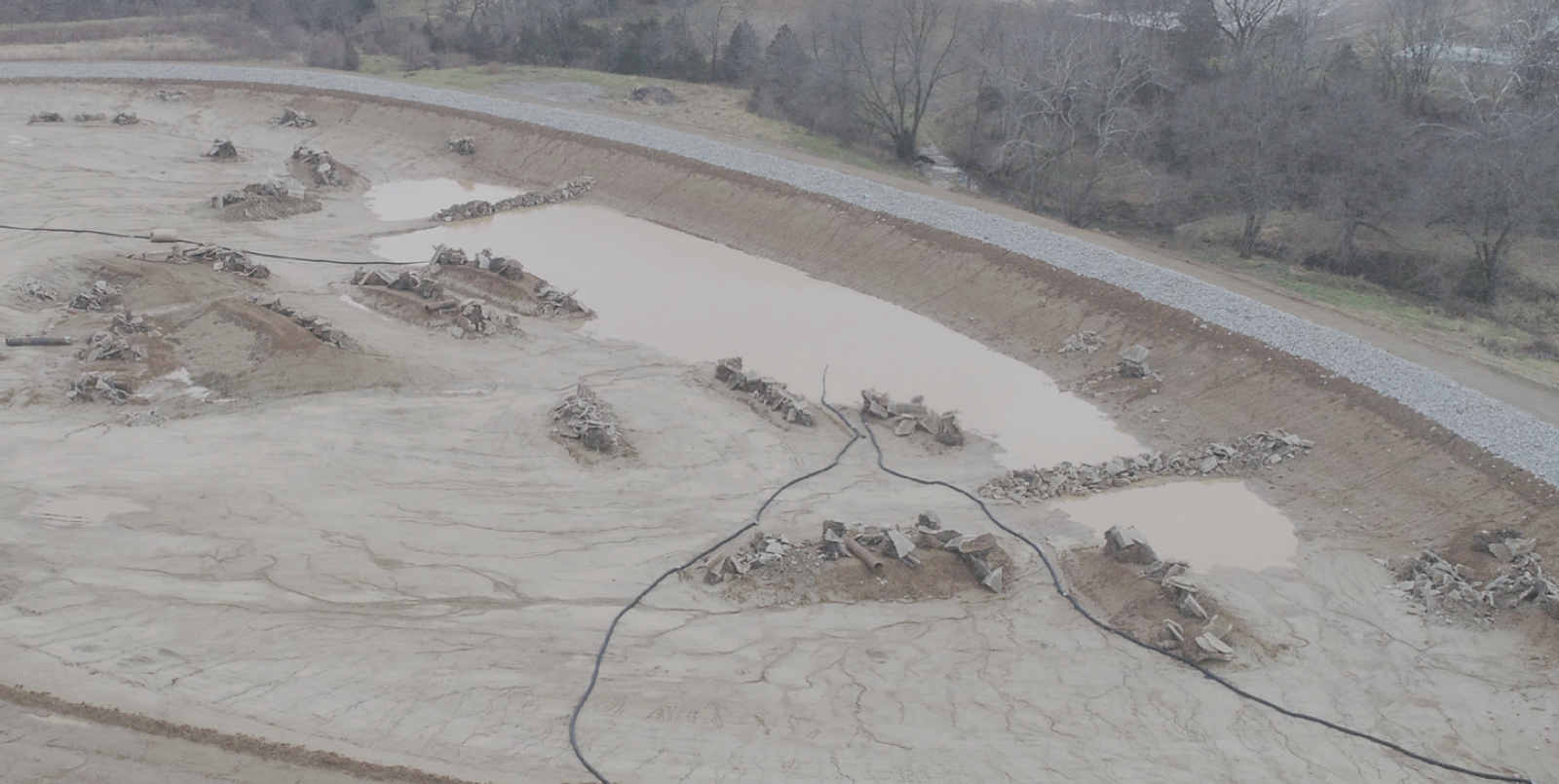
Largemouth Bass Catch Rates on Private Trophy Fisheries
As seen published in Pond Boss Magazine
A memorable day of fishing is often characterized by how enjoyable it was. Whether with family or friends, conversation and laughter have a way of putting smiles on faces while ratcheting up the likelihood of having a good day. The quality of fish caught as well as numbers also have a big impact. Fueled by demand, advancements in technology, as well as improved fisheries management techniques continue to increase odds of catching fish and having a great day on the water.
Whether on a large lake or a small pond, there are days and hours that Largemouth bass catch rates are poor. It would be great to have a button to push that triggered a lake-wide feeding response, but unfortunately, bass feeding behaviors are complex and difficult to control. This is especially true when managing a trophy fishery.
Although we all enjoy relaxing while catching impressive fish, a great deal of ongoing work is required to maintain a sustainable trophy fishery. To do this well, managers must have solid data to lean on when making decisions.
Angler creel data is helpful. Basic data to track includes: date, time of day, angler names, number of anglers, hours fished, bass lengths (rounded down to the nearest half-inch), what fish were harvested, and anything noteworthy as it relates to fish caught or reasons that may have positively or negatively impacted catch rates.
To maximize the creel data’s value, year-over-year angler data should be collected in a similar manner to draw accurate comparisons. Managers must be aware of variables that are skewing the data and take them into consideration. With a robust data set, managers have the ability to not overthink short-term trends, while gaining a firm understanding of recruitment, growth, and mortality. This knowledge, teamed with electrofishing data, is incredibly powerful when trying to make accurate management decisions.
3 Approaches to Improving Catch Rates
When it comes to catching bass, anglers continually desire higher catch rates. Although we lack a strategy to get bass to bite our lures upon our desire, there are reliable strategies and management approaches to improve catch rates.
For the purposes of this article, catch rate improvements have been lumped into three approaches…
The first is; improving angling strategy. The second and third approaches relate to focusing on fisheries management strategies that maximize catch rates by concentrating the bass population and improving bass aggression.
1. Improve Angling Strategy
How to specifically achieve better catch rates will look different for each angler and each fishery. This is especially true when looking at the first approach of improving angler strategy. Learning about fish behavior can turn into a never-ending journey, and is also something that some anglers take far more seriously than others. There are a large number of resources available to stay on the cutting edge of what anglers are doing to beat the odds.
Here are some of the basics. Largemouth bass are typically easiest to locate and catch in spring months as water temperatures are warming. Temperature increase coincides with pre-spawn and spawning period.
Just before a weather-front rolls through is another great time to find many bass biting. Air temperature, water temperature, water clarity, barometric pressure, moon phases, and time of day contribute to improved bass catch rates. Some of the most intense and successful trophy bass fisherman I know fish at night during full moon, pre-spawn. This is just a small reminder of how far people go to improve catch rates, especially when targeting trophy fish.
As you improve the timing of your outings, also factor in how water temperature impacts speed of bass movement. Bass are lethargic in cold water, so if water temperatures are cool, your lure choice, lure speed, and approach need to reflect the lethargic behavior of the bass. In some instances, live bait is the ideal choice in cold water. If water temps are warm, bass will be moving faster, so consider using faster techniques.
Regardless of water temperature, it is always best to know where fish are spending their time. In recent years, technology has advanced rapidly, allowing anglers to implement the use of LiveScope technology to increase catch rates. Although not widely used on private water to catch Largemouth bass, the technological advancements are impressive and have incredible utility in the right applications. Using this technology to find bass on beds in the spring, or identify schools of forage or bass piled up in a random spot is a game changer. As you become proficient with the technology, your catch rates and efficiency will increase significantly. Before you know it, the journey takes on a life of its own, resulting in a better understanding of bass behavior and an improved ability to catch bass.
2. Concentrate Populations Into Predictable Locations
Finding the fish is huge. Aside from improved angling techniques, fisheries management strategies are another great way to improve catch rates. If done properly, managers can concentrate the bass population and even improve bass aggression.
Managers have two choices when looking to put fishermen on more bass. They can either increase the bass population, or concentrate it into predictable locations. Concentrating the population is a preferred strategy to improve angler catch rates on trophy fisheries since it creates the feeling of a large bass population while allowing managers to maintain a robust biomass of forage fish.
Complex habitat strategically placed throughout the waterbody encourages bass to stack up as well as establish dependable fish travel routes. Complex habitat typically consists of multiple types of cover such as trees, rocks, and vegetation oriented with vertical height, while on or adjacent to natural congregation areas such as drop offs, flats, channels and points. As you seek out these key areas, keep in mind bass naturally gravitate to changes in substrate as well, so having strategic areas of sand, gravel or rock substrate under or adjacent to cover and designated travel routes strengthens quality of the congregation areas and, thus, improves catch rates.
Completing this work is most effectively done when able to design and contour the waterbody while it is empty. That said, most do not have the luxury of draining their waterbody and redesigning it.
Many waterbodies have too much or too little cover. Additionally, cover is typically not complex enough. Starting with too little cover is much easier to solve compared to having too much. Waterbodies peppered with stumps scattered beneath the surface are a good example of too much cover that is poorly spread out, as well as not complex enough. Basic brush piles are another example of cover that desires more complexity.
Although less common in manmade ponds, water currents create predictable fish movement as well. This can occur in shallow water where runoff enters the waterbody or, if budgets allow, water can be pumped or circulators can be installed to encourage bass and forage species to pile up in both shallow or deep areas. Another artificial, but more common tool used to congregate bass is underwater lighting around docks. Based on experiences when electrofishing, bass can pile up surprisingly well around these lights.
3. Improve Bass Aggression
Managing to improve bass aggression is another strategy that will impact angler catch rates. Minimizing bass stress is important here. Bass under stress are less likely to feed or act normal. Stress can come in the form of poor water quality such as low dissolved oxygen, imbalanced pH, elevated ammonia levels, as well as a variety of other parameters. Otters and cormorants are other stressors that impact bass aggression. The simple presence and pressure from these predators are enough to throw off bass feeding behavior, even if the bass is not under a direct threat.
One of the best ways to improve bass aggression on a trophy fishery is to minimize angling pressure. Less educated, less wary bass are easier to catch. As a generalization, the higher the angling pressure, the larger the bass population must be to avoid impacting catch rates. Think, “hook shy”.
As research continues over the course of this decade, breakthrough discoveries surrounding bass genetics will create another game-changing moment for the industry. Pedigree bass breeding programs will make it possible to select for bass that are easier to catch by identifying the “vulnerability gene.” As these advancements are made, angler catch rates will see further improvement.
With spring knocking at the door, it is a perfect time to do some critical thinking about your fishery. Consider ways to improve catch rates, keeping in mind that tracking catch rate data on your trophy fishery can provide an incredibly powerful dataset to be used for decision making. With some hard work and a willingness to continue learning, you will be well on your way to improving catch rates and maximizing your bass fishing opportunities…and some really big fish.
SOLitude Lake Management is a nationwide environmental firm committed to providing sustainable solutions that improve water quality, enhance beauty and preserve natural resources.
SOLitude’s team of aquatic scientists specializes in the development and execution of customized lake, stormwater pond, wetland and fisheries management programs. Services include water quality testing and restoration, algae and aquatic weed control, installation and maintenance of fountains and aeration systems, shoreline erosion control, muck and sediment removal and invasive species management. SOLitude partners with homeowners associations, golf courses, private landowners, businesses and municipalities. SOLitude Lake Management is part of Rentokil, a leading business services company, operating across the United States, Canada and Puerto Rico.
For more information, visit SOLitude Lake Management at solitudelakemanagement.com, and connect on Facebook, LinkedIn and Twitter.
















